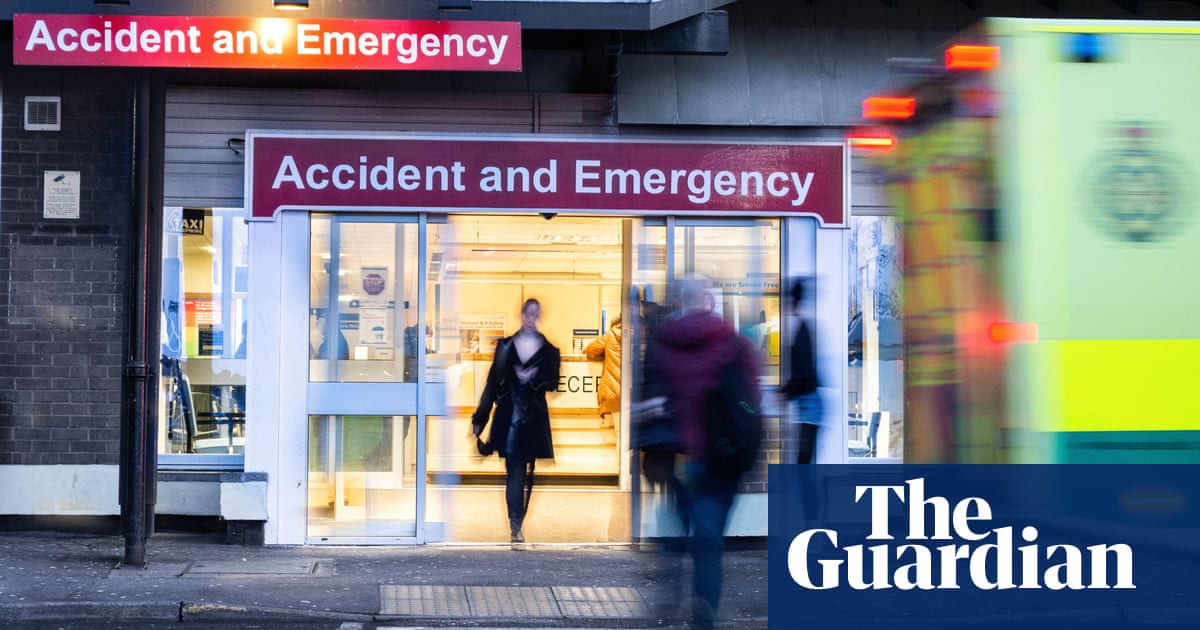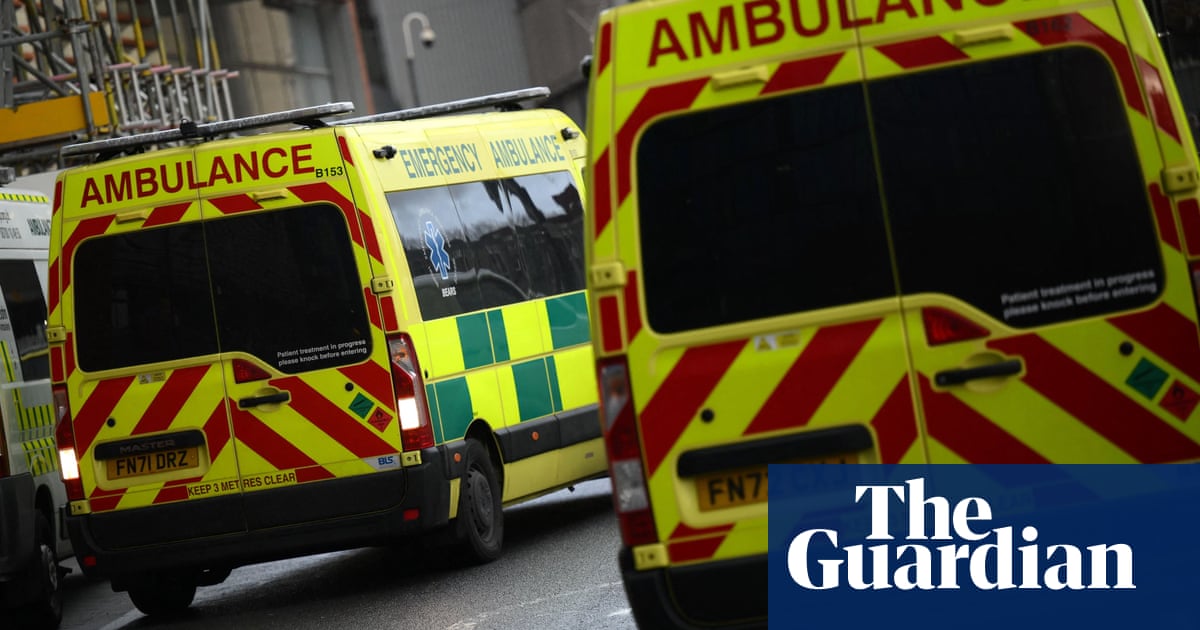
One in 10 people attending A&E in England face a “dangerous” wait of at least 12 hours for staff to deal with their problem, previously hidden NHS figures show.
Data released on Thursday by NHS England for February showed that 125,505 people – 10% of everyone who sought help at a hospital-based emergency department in England that month – endured waits of at least 12 hours to be admitted, transferred or discharged.
It is the first time NHS England has published details of how many people endure waits of that length, and comes after sustained pressure from the Royal College of Emergency Medicine (RCEM), which represents A&E doctors, to put the statistics into the public domain.
The situation was worst at the two hospitals run by the Barking, Havering and Redbridge NHS trust in east London, where 31% of patients – the highest proportion at any health trust in England – faced 12-hour A&E waits.
At least a fifth of patients at five other trusts had 12-hour A&E waits – those in east Kent (25%), Blackpool (24.7%), Plymouth (24.4%), Shrewsbury and Telford (21.6%) and Cornwall (20.5%).
“These figures finally lay bare the appalling extent of long A&E delays,” said Daisy Cooper, the Liberal Democrats’ health spokesperson. “In some parts of the country, more than three in 10 patients are waiting longer than 12 hours in A&E. The Conservatives have let the NHS crisis spiral out of control. They are letting patients down badly, making them wait in pain for the treatment they need.”
The RCEM praised NHS England for its decision to be open about the number of 12-hour waits from patients’ arrival time. Previously it had only published figures for the much smaller number of people who encountered a 12-hour wait after doctors had admitted them.
The college had lobbied for the change, saying that publishing only the smaller number did not convey the full extent of the very long waits A&E patients often faced because of bed and staff shortages.
“As the data show, there are large numbers of patients waiting 12 hours from their time of arrival,” said Dr Adrian Boyle, the college’s president. “Now we must get to work and reduce these dangerous delays and overcrowding in emergency departments, which we know are harmful to patients.”
Dr Layla McCay, the director of policy at the NHS Confederation, said the figures reflected the “relentless” demand for urgent and emergency care that hospitals were facing in winter. “The figures for 12-hour A&E waits from arrival show that too many patients are having to wait longer than NHS leaders would want or expect,” she said.
NHS England’s latest monthly performance statistics showed that almost 40,000 patients had to wait more than 12 hours in A&E after the decision to admit them. Tim Gardner, the assistant director of policy at the Health Foundation thinktank, said these people were “the tip of the iceberg” compared with the large number of 12-hour waits.
NHS England stressed that the winter of 2022-23 had been the busiest on record for A&Es and ambulance services.
Despite that – and the recent series of strikes that have disrupted services – staff had still made good progress on cutting the number of patients waiting at least 78 weeks for planned hospital care, said Prof Stephen Powis, the NHS England medical director.












